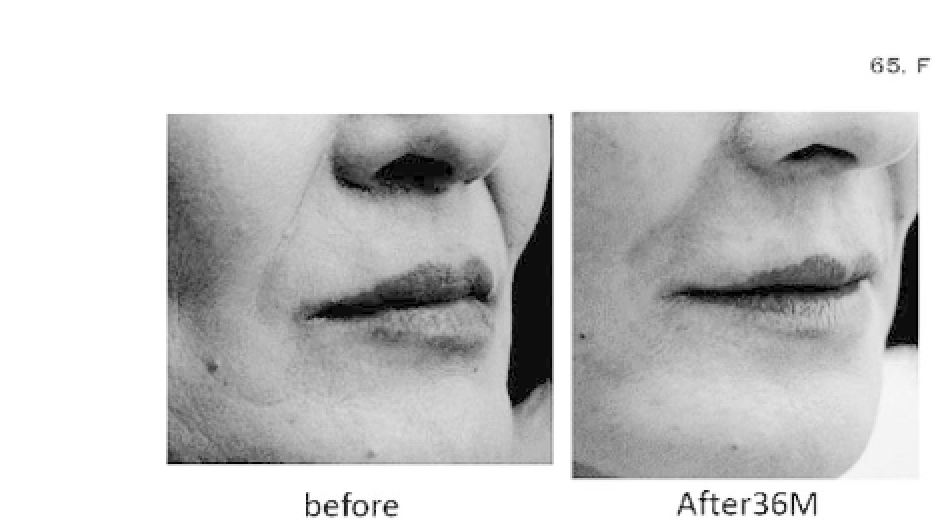Biomedical Engineering Reference
In-Depth Information
Figure 35.11.
Appearance immediately after cell injection (
left
) and 36
monthsafter injection (
right
). See also Color Insert.
35.4 Discussion
35.4.1
Fibroblast and HA for Skin Rejuvenation
The art of injection fillers began in the beginning of the twentieth
century with a para
n injection for augmentation after orchiec-
tomy.Thequestformoresuitablefillermaterialscontinuedoverthe
years. A refined form of liquid silicone was introduced in the 1960s
and was widely used until countless complications arose, and it was
essentially banned. At the beginning of the 1980s, bovine collagen
was introduced, and it soon became the gold standard against other
newly introduced materials. Allergic reactions seen after the appli-
cationofbovinecollagenanditslimitedlongevityhavesustainedthe
search for amore ideal filler material.
6
Autologous fat, an abundant filler material, was popularized by
Founrnier in the 1970s.
2
Resorption of 60% has been reported for
autologous fat grafts. Newer injectable materials, such as autolo-
gous injectable human collagen (Autologen; Collagenesis Inc., Bev-
erly, MA), developed from surgically excised skin, and dermalogen
(Collagenesis, Inc.), manufactured from cadaveric skin, have been
introduced.
6
Isolagen(IsolagenTechnologies,Inc.,Paramus,NJ)uses








Search WWH ::

Custom Search